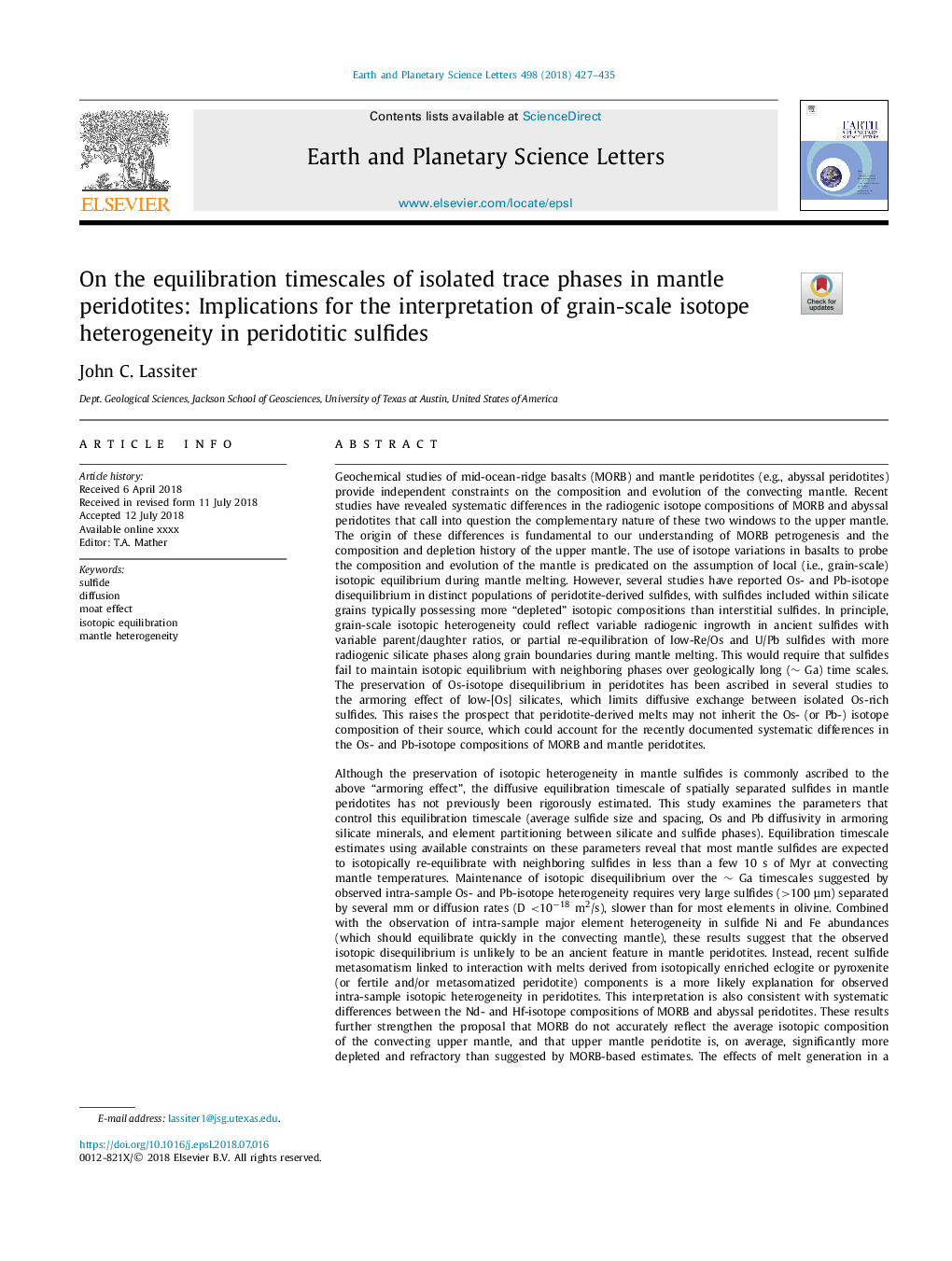| Article ID | Journal | Published Year | Pages | File Type |
|---|---|---|---|---|
| 8906737 | Earth and Planetary Science Letters | 2018 | 9 Pages |
Abstract
Although the preservation of isotopic heterogeneity in mantle sulfides is commonly ascribed to the above “armoring effect”, the diffusive equilibration timescale of spatially separated sulfides in mantle peridotites has not previously been rigorously estimated. This study examines the parameters that control this equilibration timescale (average sulfide size and spacing, Os and Pb diffusivity in armoring silicate minerals, and element partitioning between silicate and sulfide phases). Equilibration timescale estimates using available constraints on these parameters reveal that most mantle sulfides are expected to isotopically re-equilibrate with neighboring sulfides in less than a few 10 s of Myr at convecting mantle temperatures. Maintenance of isotopic disequilibrium over the â¼ Ga timescales suggested by observed intra-sample Os- and Pb-isotope heterogeneity requires very large sulfides (>100 μm) separated by several mm or diffusion rates (D <10â18 m2/s), slower than for most elements in olivine. Combined with the observation of intra-sample major element heterogeneity in sulfide Ni and Fe abundances (which should equilibrate quickly in the convecting mantle), these results suggest that the observed isotopic disequilibrium is unlikely to be an ancient feature in mantle peridotites. Instead, recent sulfide metasomatism linked to interaction with melts derived from isotopically enriched eclogite or pyroxenite (or fertile and/or metasomatized peridotite) components is a more likely explanation for observed intra-sample isotopic heterogeneity in peridotites. This interpretation is also consistent with systematic differences between the Nd- and Hf-isotope compositions of MORB and abyssal peridotites. These results further strengthen the proposal that MORB do not accurately reflect the average isotopic composition of the convecting upper mantle, and that upper mantle peridotite is, on average, significantly more depleted and refractory than suggested by MORB-based estimates. The effects of melt generation in a heterogeneous marble-cake mantle need to be explicitly considered when using basalt compositions to constrain mantle composition and evolution.
Keywords
Related Topics
Physical Sciences and Engineering
Earth and Planetary Sciences
Earth and Planetary Sciences (General)
Authors
John C. Lassiter,
